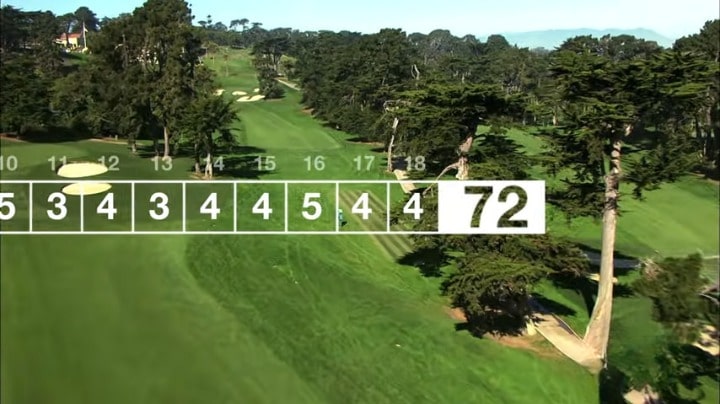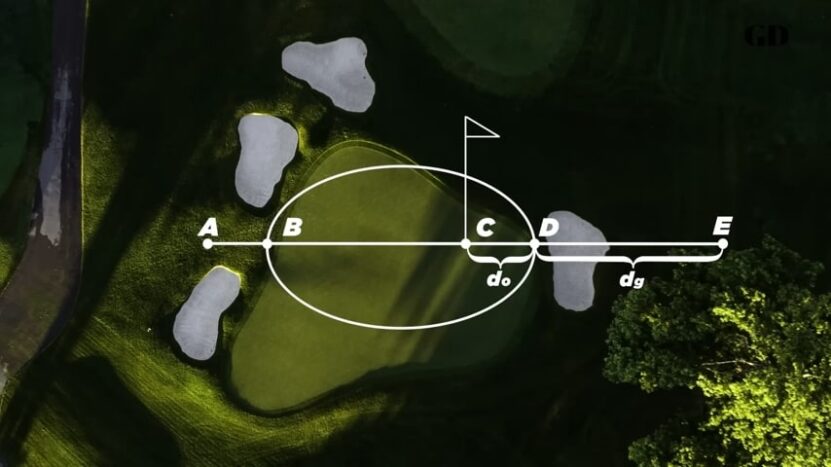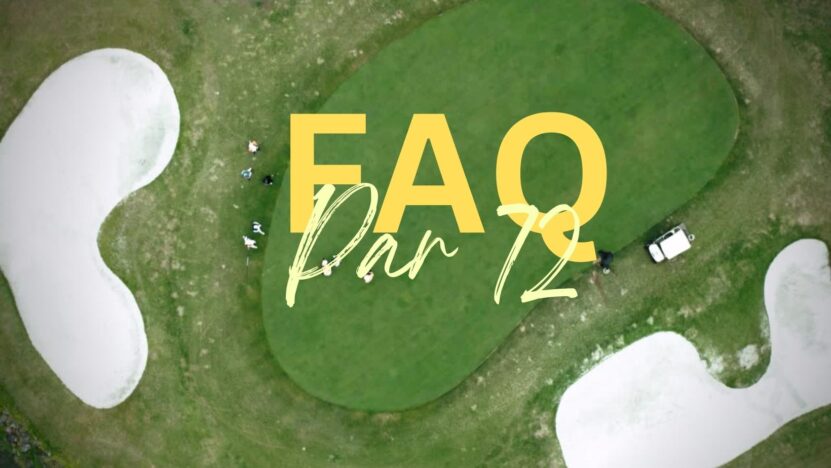Golf is a sport that requires precision, skill, and strategy. The objective of the game is to hit a small ball into a series of holes in as few strokes as possible. The number of strokes that a skilled player should take to complete a hole or a round is known as Par.
In golf, a course’s Par value is the sum of the Par values of all its holes. Par 72 is a term frequently used in golf to describe the standard number of strokes required to play a course. In this article, we will explore the question of whether all golf courses are Par 72, and dive deep into the history and mechanics of the Par system in golf.
Definition of Par 72 in golf courses

Par 72 is a term used to describe the standard number of strokes a skilled golfer should take to complete a course of 18 holes. A golf course’s Par value is the sum of the Par values of all its holes, which typically range from 3 to 5. Par 3 holes are the shortest holes on a golf course, and a skilled golfer should be able to complete them in three strokes or less.
Par 4 holes are typically longer and more challenging, with a skilled golfer expected to complete them in four strokes or less. Finally, Par 5 holes are the longest and most challenging holes on a course, with a skilled golfer expected to complete them in five strokes or less.
Scoring system
The scoring system in golf is based on the number of strokes it takes a player to complete each hole. Each hole is assigned a Par value, which represents the number of strokes a skilled golfer should take to complete the hole. If a player completes the hole in the same number of strokes as the value, they are said to have made Par.
If they complete the hole in fewer strokes than the value, they are said to have made a birdie, eagle, or even an albatross, depending on how many strokes they took. If they complete the hole in more strokes than the Par value, they are said to have made a bogey, double bogey, or worse, depending on how many strokes they took.
Influencing Factors
Several factors can affect the difficulty of a golf course, including the length of the course, the layout of the holes, the type of grass on the course, and the weather conditions. A longer course with more challenging holes will typically have a higher Par value than a shorter course with easier holes.
The type of grass on the course can also affect the difficulty, as some types of grass may make the ball travel further or have more or less resistance than others. Weather conditions such as wind, rain, and temperature can also impact the difficulty of a golf course, as they can affect the flight of the ball and make certain shots more challenging.
How the length of a golf course impacts its Par value
The length of a golf course is one of the most significant factors that affect its Par value. As mentioned earlier, Par values are assigned based on the number of strokes a skilled golfer should take to complete a hole.
A longer hole will typically have a higher Par value than a shorter hole because it requires more strokes to complete. Therefore, a golf course with longer holes will have a higher Par value than a course with shorter holes, all other things being equal.
The history of Par 72 in golf
Its use as the standard for golf course length and difficulty dates back to the early 20th century. In 1911, the United States Golf Association (USGA) established a standard of 72 strokes for a typical 18-hole course, with four 3 holes, ten 4 holes, and four Par 5 holes. This standard became widely adopted by golf courses around the world, and today, it is considered the standard for full-length golf courses.
How golf course designers determine the Par value

Golf course designers use a variety of factors to determine the Par value of a course, including the length and difficulty of each hole, the type of terrain and obstacles on the course, and the intended audience for the course.
They may also take into account the average skill level of the golfers who will play the course and adjust the Par values accordingly. Ultimately, the Par value of a course is designed to provide a reasonable challenge for skilled golfers while still being playable for those of lower skill levels.
Examples
Some of the world’s most famous and prestigious golf courses have a Par 72 rating, including Augusta National Golf Club, home of the Masters Tournament, and Pebble Beach Golf Links, host of the U.S. Open. Other notable Par 72 courses include St. Andrews Links in Scotland, home of the oldest golf course in the world, and Pinehurst Resort in North Carolina, which has hosted several major golf tournaments.
Why Par 72 is considered the standard in golf
Par 72 has become the standard in golf due to its widespread use and the fact that it provides a reasonable challenge for skilled golfers while still being playable for those of lower skill levels.
It is also a convenient benchmark for comparing different golf courses, as it provides a consistent and easily understood measure of course difficulty. Additionally, Par 72 courses tend to be long enough to offer a variety of challenges while still being playable in a reasonable amount of time.
The impact of weather conditions on golf course Par value

As mentioned earlier, weather conditions can have a significant impact on the difficulty of a golf course and therefore its Par value. Strong winds can make it more challenging to control the flight of the ball, while rain can make the course wet and muddy, making it harder to hit clean shots.
Temperature can also play a role, as the ball may travel further in warmer weather or less far in colder weather. Golf course designers and tournament officials may take weather conditions into account when setting Par values or making adjustments during play.
The relationship between Par value and golf handicaps
Golf handicaps are a way to measure a player’s skill level relative to the difficulty of a particular golf course. Handicaps are calculated based on a player’s scores on different courses, with adjustments made for the relative difficulty of each course.
The higher a player’s handicap, the more strokes they are allowed to take on each hole to complete the course in a reasonable number of strokes. It plays a role in calculating a player’s handicap, as it provides a baseline for determining the difficulty of the course relative to the player’s skill level.
The Role of Par Value in Tournaments

It plays a crucial role in professional golf tournaments, as it is used to determine the winner of the tournament. The player with the lowest number of strokes over the course of the tournament is declared the winner, with ties broken by a sudden-death playoff or other methods.
It is also used to determine the cut line, which is the number of players who advance to the final rounds of the tournament. Players who finish the first two rounds of the tournament above the cut line are eliminated from further play.
Controversies surrounding the Par value system in golf
This system in golf has faced some controversies over the years, with some critics arguing that it can be arbitrary and misleading. For example, a terrain with a low Par value may be perceived as easier than a terrain with a higher Par value, even if the actual difficulty of the two courses is similar.
Additionally, some golfers may feel that this value system does not accurately reflect their own skill level or the challenges of a particular course.
The Future of Par 72 in golf course design
As golf terrain design continues to evolve, it is likely that we will see more variations in Par values and terrain lengths. Some designers may seek to create shorter, more accessible courses with lower Par values to appeal to beginner golfers or those with limited time.
Others may focus on creating longer, more challenging courses with higher Par values to appeal to skilled golfers and professional tournaments. However, it is likely that Par 72 will remain the standard for full-length golf courses for the foreseeable future.
FAQs

Are executive golf courses always Par 72?
No, they can have a lower Par value, typically 54 or 63, depending on the length and difficulty of the holes.
Do all professional golf tournaments use Par 72 courses?
No, professional golf tournaments can use a variety of terrains with different Par values, depending on the rules and regulations of the tournament.
How can a golf course’s Par value affect a player’s strategy?
It can affect a player’s strategy by influencing their shot selection and risk-reward decisions. Players may aim for more conservative shots on holes with higher Par values while taking more risks on holes with lower Par values.
What are some famous Par 72 golf courses?
Some famous are Augusta National Golf Club, Pebble Beach Golf Links, St. Andrews Links, and Pinehurst Resort.
Can the Par value of a golf course change over time?
Yes, it can change over time, depending on changes to the layout, terrain, or obstacles on the terrain. Designers and tournament officials may also make adjustments to the Par value based on weather conditions or other factors.
Conclusion
In conclusion, while Par 72 is the standard for full-length golf courses, not all golf courses have this Par value. It is determined by a variety of factors, including the length and difficulty of each hole, the type of terrain and obstacles on the course, and the intended audience for the course. It plays a significant role in calculating golf handicaps and determining the winner of professional golf tournaments.
The system has faced some controversies, with some critics arguing that it can be arbitrary and misleading. As golf course design continues to evolve, it is likely that we will see more variations in Par values and course lengths, but Par 72 is likely to remain the standard for full-length golf courses for the foreseeable future.

